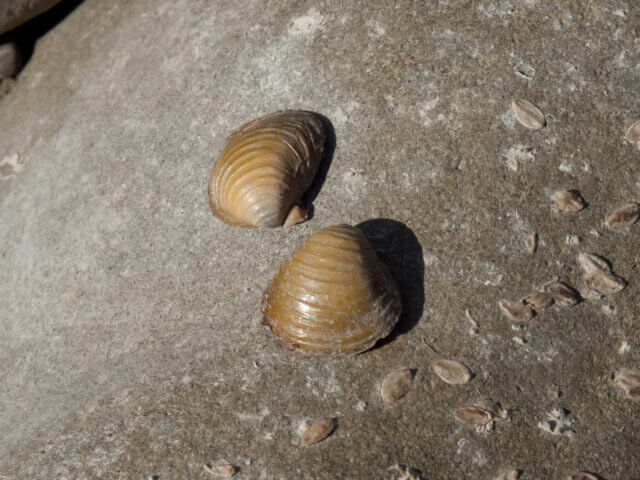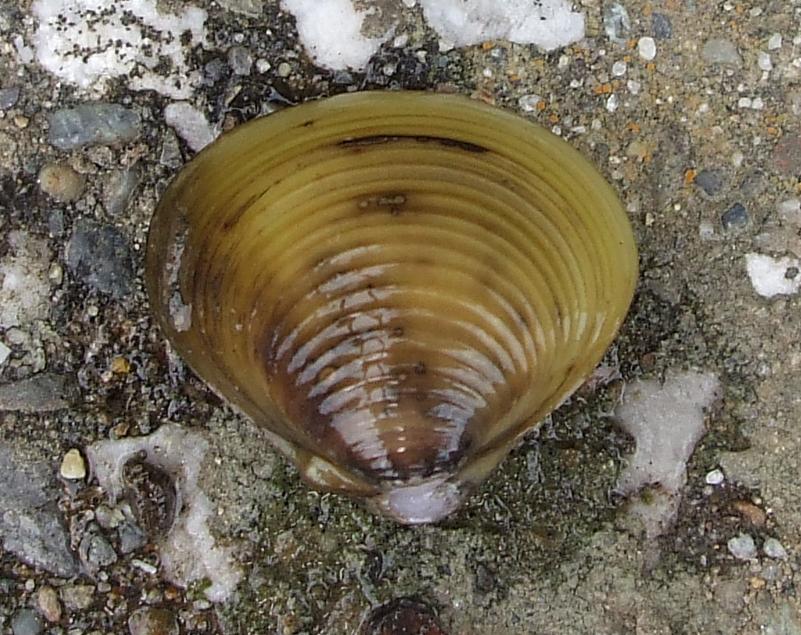Corbicula fluminea
Description
- Usually smaller than 25 mm (but can grow up to 65 mm in length)
- Yellowish-green to light brown shell with concentric, evenly spaced, distinct ridges on shell surface
- Occurs in streams, rivers, lakes & reservoirs, and irrigation and drainage canals
- Fresh water filter feeding clam, native to Southeast Asia, Australia, Africa, Indonesia, and Turkey
- Common in aquariums and ornamental ponds (may be sold as “pygmy” or “gold” clams)
Consequences of invasion
- Cause biofouling & clogging of water treatment systems & pipes and power plants resulting in increased costs to users
- Alter water chemistry and contaminate drinking water with algal blooms
- Occur in high densities: a single clam can create a new population due to self-fertilization, producing up to 70,000 eggs/year
- Compete with native species for food and habitat
Integrated pest management options
- Prevention! Don’t Let it Loose! Dispose of aquarium contents in a responsible way: drain aquariums on dry land
- Prevention! Don’t Let it Loose! Ensure water garden and pond contents are contained


